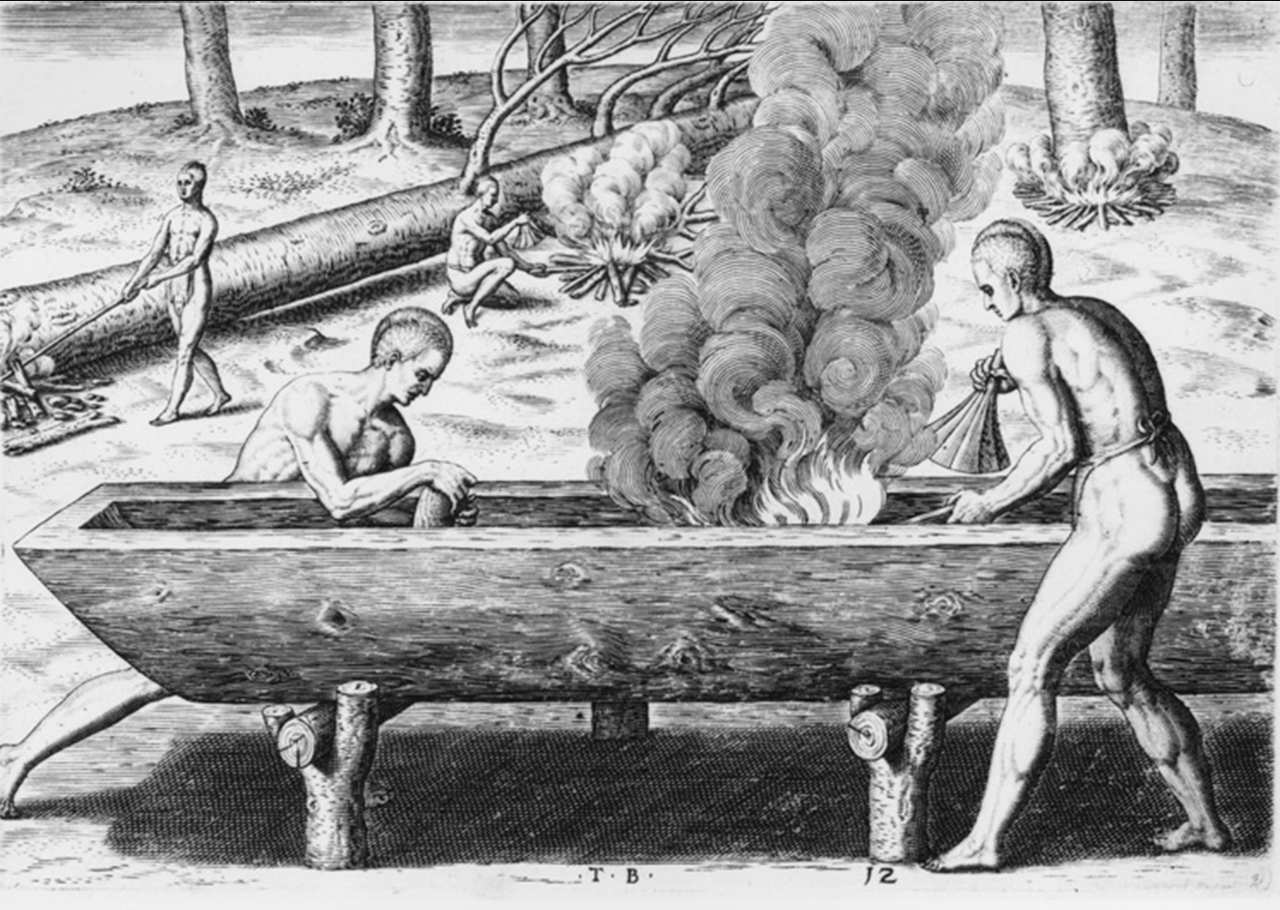
Crafting a dugout canoe using only stone tools and fire was a labor intensive and time-consuming process.
The first hurdle for the canoe builders was selecting and cutting down a tree large enough to serve as a canoe. Stone tools alone will not cut down a large tree.
|
According to several accounts, the makers wove branches together just above the base of the tree. They then applied mud to the woven branches to protect the upper parts of the tree from burning. This technique of using woven sticks and mud is known as wattle and daub.
The crafters built the fire at the base of the tree. As the wood was charred by the fire, they would use a stone ax or adze to remove enough of the wood to cause the tree to fall.
The other end of the tree was “cut” using the same method.
In 2006, the Bureau for Historic Preservation of the Pennsylvania Historical and Museum Commission recreated the process of building a dugout canoe using only stone tools. In their experiment, they found that a stone adze was remarkably effective in shaping a log into a canoe.
It is generally thought that a controlled fire was built on the surface of the log to char the wood to be removed. The charred wood was then chipped out to hollow the interior. As each layer of wood was removed, the sides of the canoe were insulated from the fire by a layer of clay to prevent them from becoming too thin.
The finished surface of the Chippewa River canoe is quite smooth. The crafters may have accomplished this by using shells, sandstone or by rubbing the surface with another piece of wood.
|
